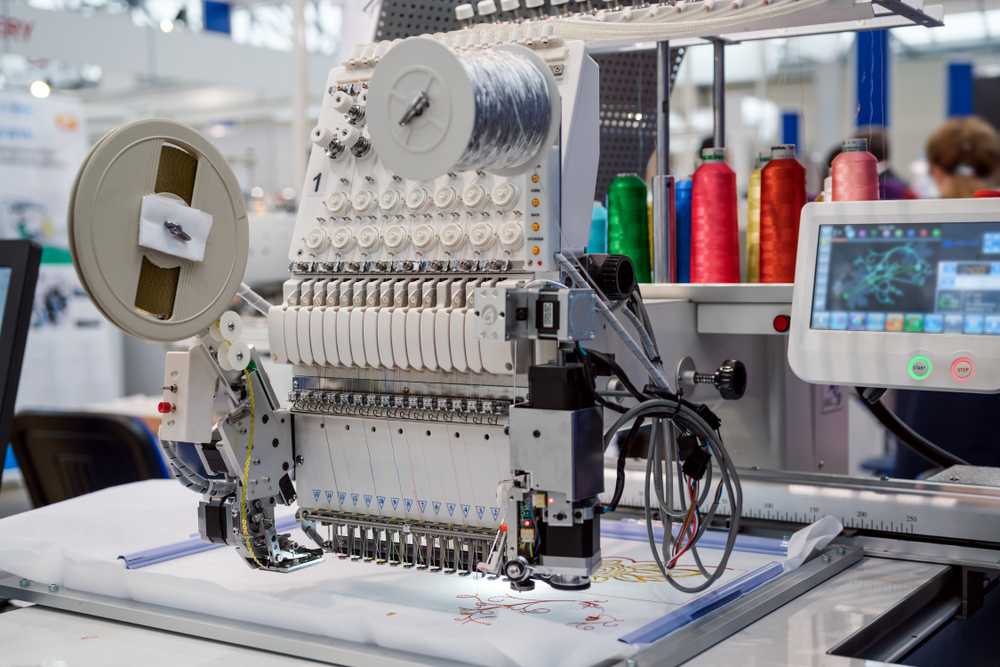Reliable Digitizing for Embroidery: Quick Turn-around
Reliable Digitizing for Embroidery: Quick Turn-around
Blog Article
Streamlining the Art of Needlework Digitizing: Step-by-Step Guide
Embroidery digitizing is a meticulous craft that requires precision and imagination. As innovation remains to advance, the digitization procedure has actually ended up being much more accessible, permitting enthusiasts to bring their intricate layouts to life with simplicity. In this guide, we will certainly unwind the complexities of needlework digitizing, damaging down each step carefully to streamline the procedure and equip both novices and seasoned embroiderers alike. Remain tuned to find exactly how you can simplify this elaborate art form and change your creative visions into beautifully stitched masterpieces.
Understanding Embroidery Digitizing Software Program
Embroidery digitizing software application functions as a crucial device for transforming detailed designs right into electronic formats compatible with needlework machines, helping with specific stitching and personalization. This customized software allows individuals to import numerous photo file styles, such as JPG or PNG, and transform them right into needlework machine-readable formats like DST, EXP, or PES - Digitizing for Embroidery. By using functions like stitch editing and enhancing, padding alternatives, and string color selection, digitizing software application allows customers to regulate every aspect of the design process
Additionally, progressed needlework digitizing software program offers tools for creating complex styles, readjusting stitch thickness, and including detailed information. Customers can additionally sneak peek the layout prior to stitching it out, guaranteeing precision and lessening mistakes. Furthermore, lots of software application supply automated functions that assist improve the digitizing process, conserving effort and time.
Recognizing the capacities of needlework digitizing software application is important for achieving high-grade lead to embroidery tasks. By mastering this device, embroidery lovers and specialists can release their creative thinking and bring intricate styles to life with accuracy and performance.

Choosing the Right Style Data
After familiarizing yourself with the capabilities of embroidery digitizing software, the following critical action in the process is choosing the best design apply for your job. Digitizing for Embroidery. When choosing a design apply for needlework digitizing, it's vital to take into consideration the intricacy of the design, the dimension of the end product, and the kind of material you will be dealing with
For detailed styles with fine information, a high-resolution picture or vector file is advised to make certain that the needlework device can accurately duplicate the style. Furthermore, the dimension of the final product plays a significant duty in choosing the right style file. Bigger styles may require greater resolution data to preserve quality and intensity.
Furthermore, the kind my response of material you will be stitching on influences the option of layout data. Various fabrics might require modifications in the design file to make sure that the stitches are properly lined up and the layout appears as meant. By thoroughly choosing the appropriate design documents based upon these elements, you can set on your own up for an effective needlework digitizing process.
Digitizing Tools and Strategies
Making use of specialized software and precision methods, digitizing devices are essential in transforming complex styles right into embroidery-ready documents. Embroidery digitizing software, such as Wilcom, Hatch, or Embrilliance, offers the needed system to transform art work right into stitch information. These programs use attributes like stitch editing, underlay options, and lettering tools to ensure the design equates effortlessly onto textile.
One of the crucial strategies in digitizing is developing a clear course for the needlework maker to comply with. This includes digitizing each aspect of the style with accuracy, establishing stitch kinds, thickness, and instructions. By making use of devices like digitizing tablet computers or software-specific plugins, embroiderers can accomplish a high degree of precision in their digitized designs.
Additionally, grasping the art of underlay sewing is crucial for producing top quality needlework. Underlay sewing maintains the fabric and creates a foundation for the design, making sure that the end product is both aesthetically appealing and lasting. By comprehending these digitizing devices and techniques, embroiderers can raise their craft and bring detailed styles to life with accuracy and performance.
Personalizing Stitch Types and Instructions
The choice of stitch kinds can dramatically affect the total appearance and structure of the stitched design. By tactically combining these stitch types, embroiderers can attain deepness and dimension in their layouts.
Additionally, the instructions of stitches plays a crucial role in enhancing the visual appeal of the final embroidery. By experimenting with different stitch angles and patterns, embroiderers can bring their designs to life with remarkable detail and complexity.
Testing and Refining Your Digitized Style
To guarantee the accuracy and quality of your digitized design, complete screening and refinement are vital actions in the needlework digitizing procedure. When you have completed the digitization of your design, it is essential to test it before waging the actual embroidery. Testing permits you to recognize any kind of possible problems such as string breaks, stitch density problems, or design distortions that may affect the outcome.

After screening, it is essential to refine your digitized style based upon the responses from the examination sew-out. This might include tweaking stitch settings, readjusting thickness, or making changes to the overall layout to achieve the desired outcome. By repeating with screening and refinement, you can fine-tune your digitized layout to perfection prior to relocating forward with the real embroidery process.
Verdict
To conclude, grasping the art of embroidery digitizing calls for a thorough understanding of the software program, choosing the right layout file, making use of digitizing devices and techniques, tailoring stitch types and instructions, and testing and refining the digitized style. By following these steps, embroiderers can streamline the digitizing process and develop high-grade embroidered styles with accuracy and effectiveness.
Report this page